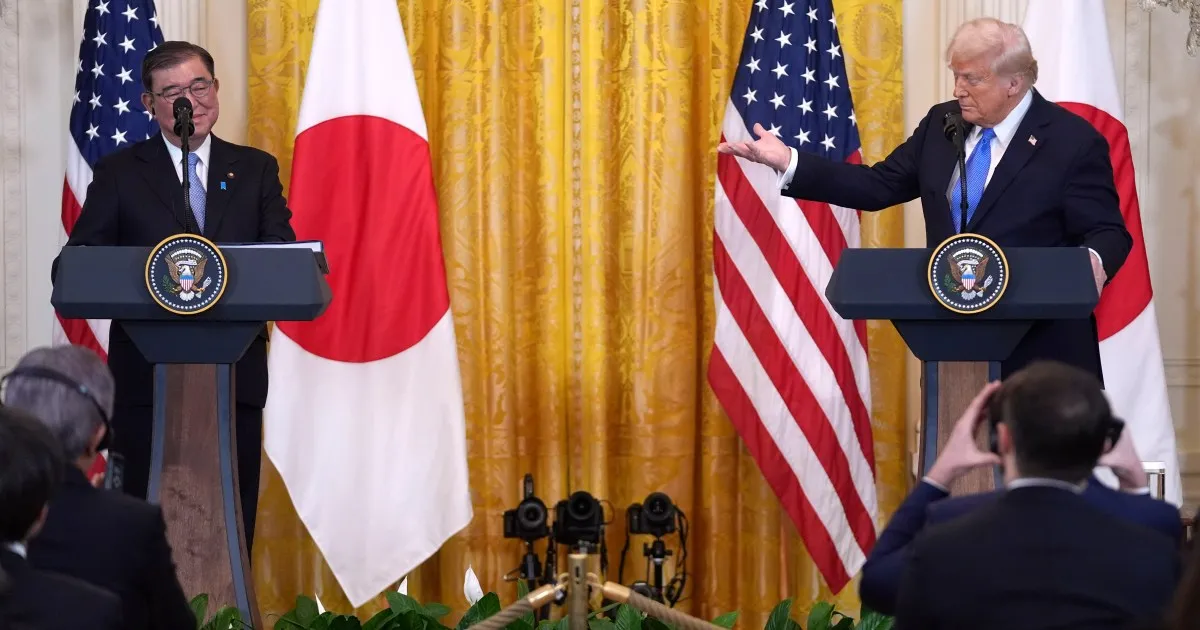
In a significant development in international trade, United States President Donald Trump has declared the completion of a “massive” trade deal with Japan after months of complex negotiations. The announcement, made on Tuesday, outlines a framework where the US will implement a 15 percent tariff on Japanese exports, while Japan commits to investing a staggering $550 billion in the United States.
Trump took to his Truth Social platform to share the news, stating, “We just completed a massive Deal with Japan, perhaps the largest Deal ever made.” He elaborated that Japan’s investment, directed by him, would yield 90% of the profits for the United States. Additionally, the agreement includes provisions for Japan to increase its imports of US goods, specifically cars, rice, and other agricultural products, a move Trump claims will create hundreds of thousands of jobs.
During a reception with members of US Congress later that day, Trump revealed that the two nations had also reached an agreement to form a joint venture aimed at exploiting liquefied natural gas resources in Alaska. “It’s a great deal for everybody. I always say it has to be great for everybody,” he remarked, emphasizing the uniqueness of this agreement compared to past trade deals.
Japanese Prime Minister Shigeru Ishiba, whose ruling coalition recently faced challenges in maintaining its majority, expressed a cautious optimism about the deal. He stated that he would “carefully examine” the details but believed the agreement served Japan’s national interest. Ishiba confirmed reports that the US tariffs on Japanese automobiles would be reduced from 25 percent to 15 percent, a shift that could alleviate some of the economic pressures on Japan.
Trump’s tariffs, particularly on automobiles and the 50 percent duties on aluminum and steel, had created significant friction in the negotiations between Washington and Tokyo. Japan had been facing a potential increase to a 25 percent duty on many of its exports if the two countries did not reach an agreement before the August 1 deadline.
Experts have weighed in on the implications of the deal. William Chou, deputy director of the Japan Chair at the Hudson Institute, commented on LinkedIn, stating, “Reciprocal tariffs set at 15% (down from 25% earlier this month) is relatively good news for Japan. However, questions remain regarding potential carveouts for Section 232 tariffs in critical sectors like steel and semiconductors.”
US Secretary of the Treasury Scott Bessent praised the agreement as a “historic” milestone, reaffirming the commitment to strengthening the longstanding US-Japan alliance. He stated, “I am happy to reaffirm our commitment to deepening this longstanding alliance and building the next chapter of US-Japan cooperation as we enter a new Golden Age under President Trump.”
In response to the announcement, Japanese auto stocks surged, with Mazda witnessing a rise of over 17 percent, while Toyota, Nissan, and Honda saw increases between 8.5 and 12 percent on Wednesday morning. Furthermore, Japan’s benchmark Nikkei 225 index climbed nearly 3 percent, signaling positive market sentiment regarding the deal.
This trade agreement could represent one of the most consequential deals Trump has unveiled thus far, following earlier agreements with countries such as the United Kingdom, Indonesia, Vietnam, and the Philippines, as well as a brief truce with China. As the world’s fourth-largest economy and the US’s fifth-largest trading partner, Japan plays a crucial role in global trade dynamics.
According to data from the US Census Bureau, the US imported $148.2 billion worth of Japanese goods in 2024, while exports to Japan totaled $79.7 billion. Brian Jacobsen, chief economist at Annex Wealth Management, remarked, “It’s a sign of the times that markets would cheer 15 percent tariffs. A year ago, that level of tariffs would be shocking. Today, we breathe a sigh of relief.”